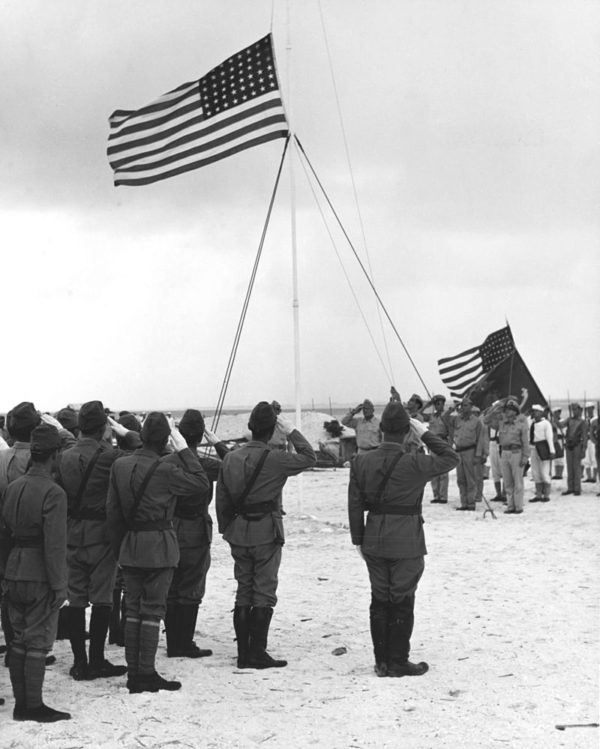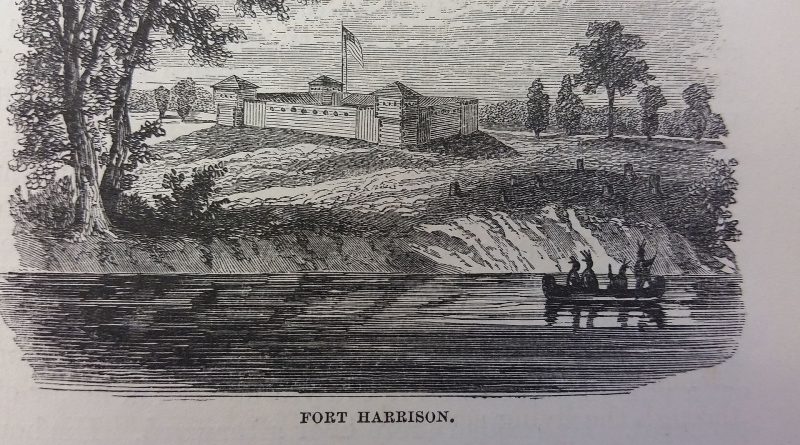September 4 in U.S. military history
1812: A force of 500-600 Kickapoo, Wea, Potawatomi, Winnebago, Delaware and Shawnee warriors launch an attack on Fort Harrison. Captain — and future president — Zachary Taylor commands the 50-man garrison, which in actuality is down to 15 able-bodied men due to sickness. One Indian crawls up to the blockhouse and sets it on fire, threatening to burn down the outpost. However, the flames made it easier to see the attackers, and although the Americans are heavily outnumbered and besieged, a relief force reaches the fort and runs off the Indians. The United States now has her first land victory during the War of 1812.
1862: Gen. Robert E. Lee’s troops begin crossing the Potomac River into Maryland, kicking off the Confederacy’s short-lived invasion of the north.
1886: Worn out after being relentlessly pursued by the U.S. Cavalry, the feared Apache leader Geronimo surrenders to the Army for the last time.
1941: While enroute to Iceland, the destroyer USS Greer (DD-145) spots a German submarine. Although the United States is not yet at war with Germany, the sub launches a torpedo at Greer, who responds by dropping depth charges, becoming the first U.S. warship to fire on — and receive fire from — a German vessel. President Franklin Roosevelt responds by issuing an order which states that from now on, American ships or planes will shoot any Axis vessels they come across.
1945: Wake Island’s 2,200 surviving Japanese soldiers surrender. Rather than retake the island following it’s capture, the United States simply bypassed it and prevented its resupply. 1,300 Japanese on the island died over the course of the war, mostly due to starvation. The Japanese commander, Rear Adm. Shigematsu Sakaibara, will be tried for war crimes and executed for the massacre of nearly 100 U.S. prisoners of war following an air raid.

1957: Arkansas governor Orval Faubus deploys the National Guard to Little Rock to block nine black students from attending Central High School. Days later, President Dwight Eisenhower will federalize Faubus’ troops and deploys the 101st Airborne Division to Little Rock to enforce desegregation.
1967: When two companies of Marines are ambushed in the Que Son Valley south of the de-militarized zone, the 1st Marine Division sweeps in to clear the area of hostiles. During the battle, Navy chaplain Lt. Vincent R. Capodanno leaves the command post to administer last rites to dying Marines and to aid the corpsmen. Although wounded himself, he refuses treatment and returns to his work. Capodanno is killed by machinegun fire as soon as he finishes dragging a wounded comrade to safety. Meanwhile, Sgt. Lawrence D. Peters ignores hostile fire raining down on his exposed position to pinpoint enemy locations and lead his Marines during the fierce battle. Both Capodanno and Peters are posthumously awarded the Medal of Honor.

Today’s post is in honor of Capt. Raymond P. Salzarulo, Jr. who was killed when his F-4C Phantom was shot down by an enemy surface-to-air missile over North Vietnam on this day in 1966. Although no parachutes were spotted, Salzarulo’s pilot, 1st Lt. John H. Nasmyth Jr., survived and spent the next 2,355 days as a prisoner of war. Salzarulo, a native of Hollansbee, W. Va. and a graduate of the Air Force Academy (Class of ’64), served with the famed 555th Tactical Fighter Squadron out of Udorn Royal Thai Air Force Base. Originally listed as missing in action, his remains were identified in 1990 and he is buried at Arlington National Cemetery next to the headstone for his father Ray Sr., a LB-30 Liberator pilot who was lost in an attack on the retreating Japanese fleet after the Battle of Midway, .
